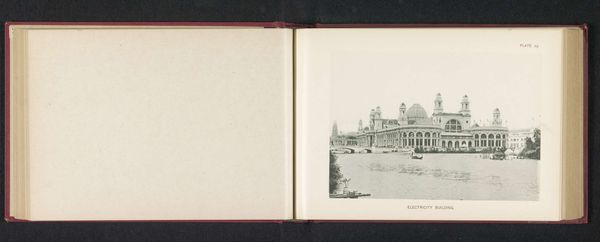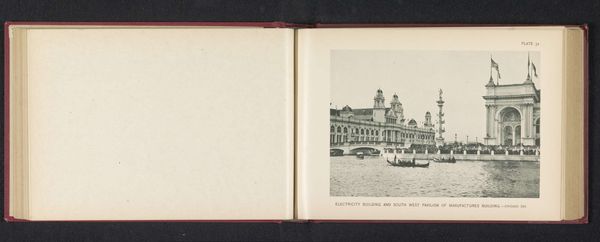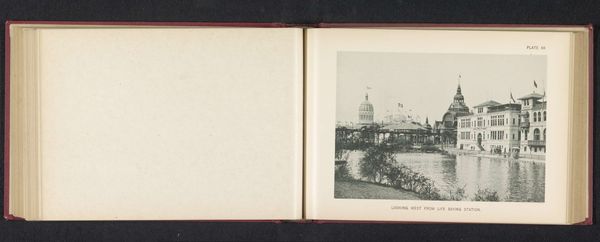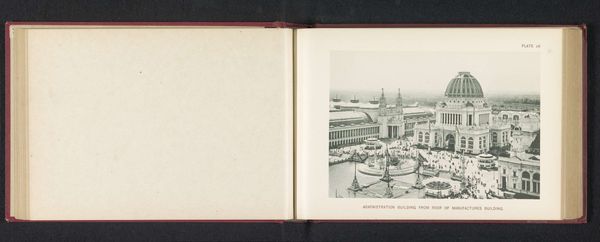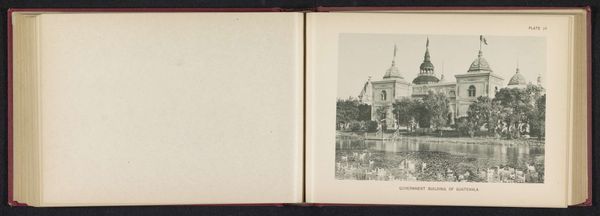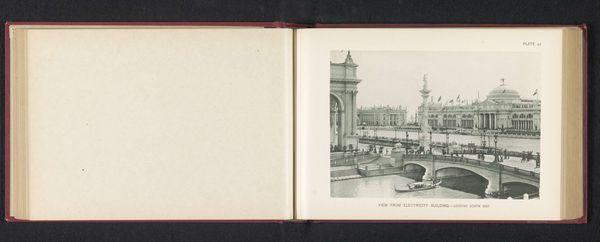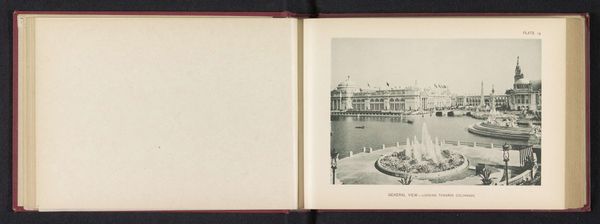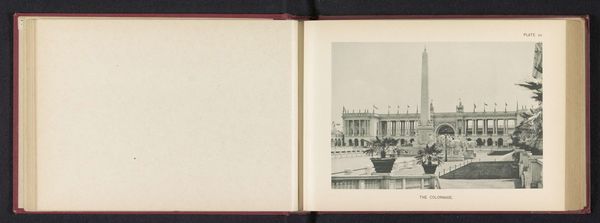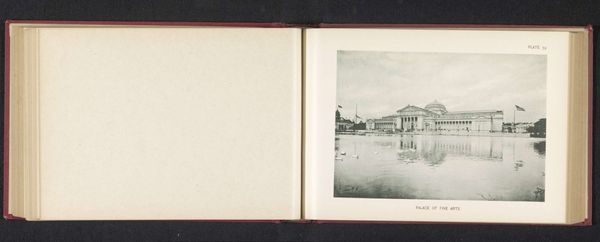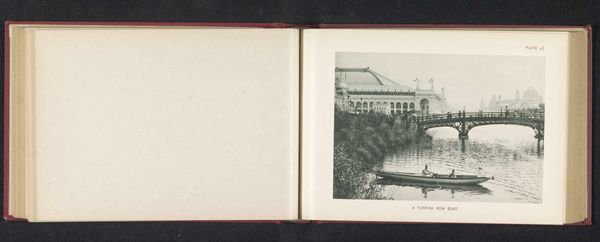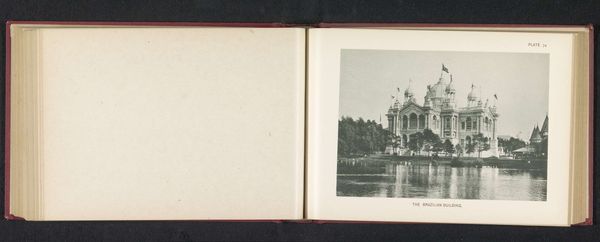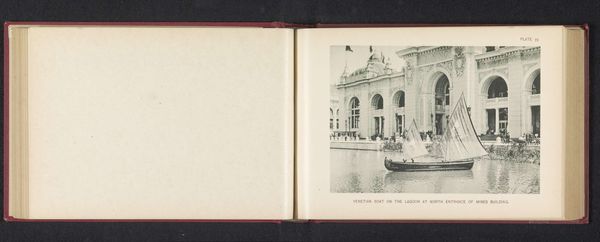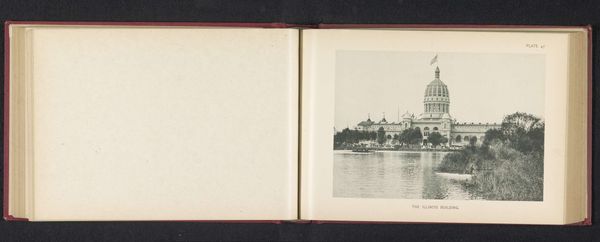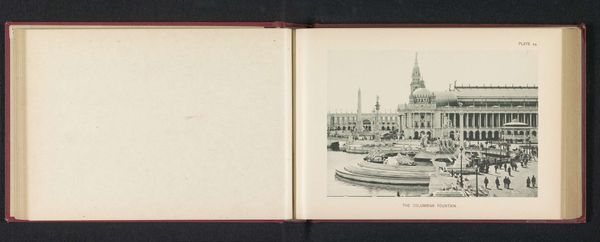
Gezicht op het tentoonstellingsgebouw voor de Verenigde Staten en het Japanse paviljoen op de World's Columbian Exposition in Chicago in 1893 1893
0:00
0:00
print, photography, gelatin-silver-print, albumen-print
# print
#
photography
#
orientalism
#
gelatin-silver-print
#
cityscape
#
academic-art
#
albumen-print
Dimensions: height 133 mm, width 190 mm
Copyright: Rijks Museum: Open Domain
Curator: Charles Dudley Arnold captured this photograph, "Gezicht op het tentoonstellingsgebouw voor de Verenigde Staten en het Japanse paviljoen op de World's Columbian Exposition in Chicago in 1893", as part of his photographic record of the event. It’s an albumen silver print, and part of an album. Editor: It has such a serene, almost dreamlike quality, doesn’t it? The buildings seem to float on the water, and the grayscale lends a timelessness to the scene. The dome is an impressive, if somewhat generic, element. Curator: I agree. Let’s consider the social context. The World's Columbian Exposition was a stage for nations to display their industrial and cultural achievements, projecting power and progress. Arnold's work, therefore, serves as promotional material but also inadvertently captures the unequal power dynamics between participating nations. Editor: Focusing on the image, I'm drawn to how Arnold contrasts the imposing neoclassical architecture of the U.S. building with the more delicate and understated Japanese pavilion. The composition places the Japanese building in the lower foreground as a diminutive cultural statement that supports the colossal dome. There's a clear visual hierarchy at play. Curator: Absolutely. These choices in architectural display, immortalized in photography that was at the cutting edge of industrialization, also speak volumes about labor practices. Consider the extraction of silver and other materials necessary for photographic production, often done under exploitative conditions. Editor: We can appreciate the print's tonal range, from the almost pure white of the sky to the deep blacks of the water's reflections. These are finely graded, with delicate details in the architecture highlighted using careful lighting and developing techniques. This really maximizes the effect and visual grandeur. Curator: Exactly. Understanding the making and means of circulation lets us reflect on the consumption of the image as a marker of cultural superiority and imperial reach during that era. This photograph is not just a picture of architecture but a picture of constructed hierarchies, consumed on a mass scale. Editor: Considering it from a formal point of view—analyzing elements such as line, shape, and form—highlights the inherent beauty achieved. These are things that draw the viewer into Arnold's composition, transcending the specific historical context it's tied to. Curator: It's a collision of social, industrial, and aesthetic ideologies. Each layer gives context. Editor: An appropriate way to interpret turn of the century social, architectural and technological accomplishments.
Comments
No comments
Be the first to comment and join the conversation on the ultimate creative platform.
